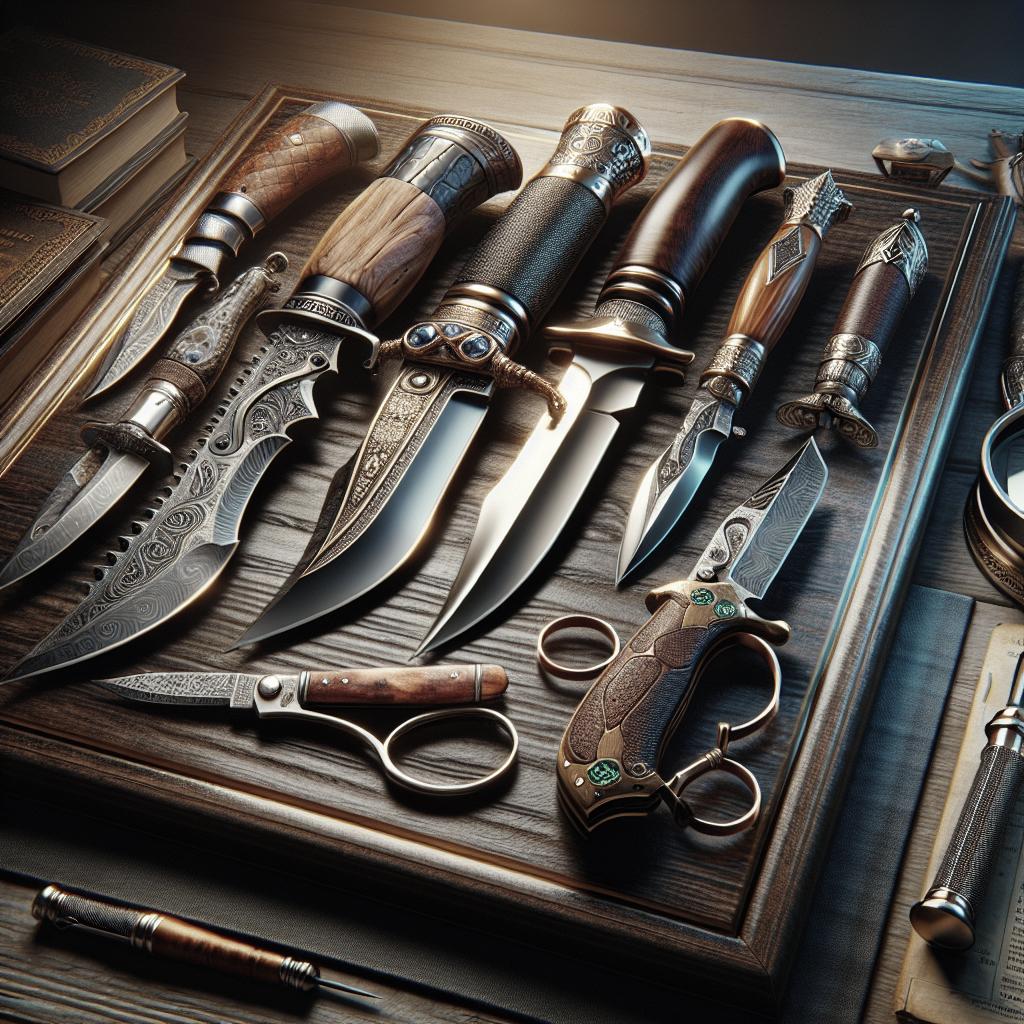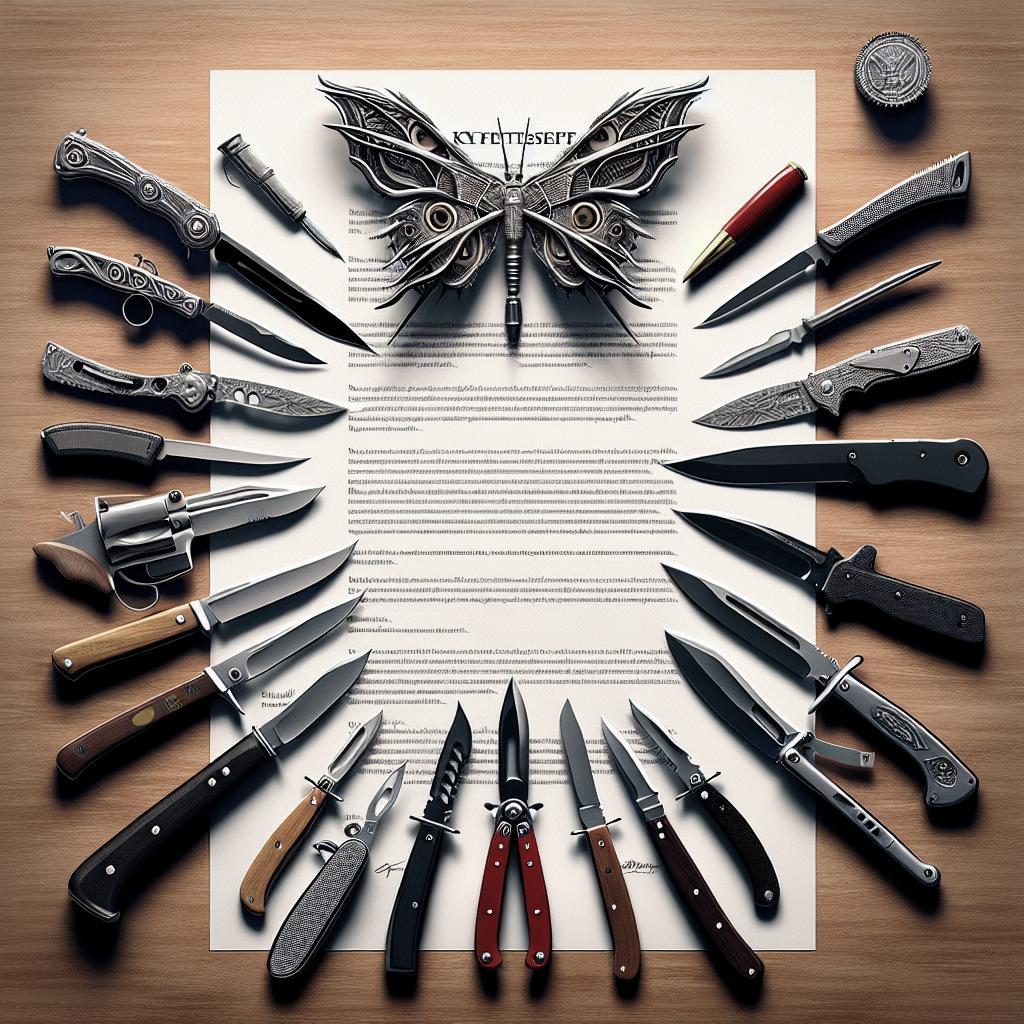Caring for Vintage Knives: A Guide
Caring for vintage knives is both an art and a preservation endeavor. These beautifully crafted tools carry history, and with proper care, they can be appreciated for future generations. This blog post will explore the essentials of caring for antique knives, from cleaning techniques and blade maintenance to proper storage and handling. You’ll also learn how to restore antique knives, document your collection, expand your knowledge, and know when to seek professional help. As we delve into this fascinating journey, take note of best practices and essential tips to ensure your collection remains in exquisite condition.
Understanding the Importance of Care
Preserving the integrity and value of vintage knives requires intentional and careful handling. Whether it is a treasured heirloom or a unique find from an antique store, each knife holds historical significance and craftsmanship that deserve respect.
Proper care not only maintains aesthetic appeal but also prevents deterioration caused by time and exposure. Developing a care routine is crucial. This enables enthusiasts to enjoy the functional and historical aspects of their collection while safeguarding its longevity.
Related Articles
Similar topics might interest those passionate about preserving vintage knives. Articles about vintage tools and historical craftsmanship provide deeper insight into related care techniques and enhance knife conservation skills.
Delving into these subjects broadens understanding and appreciation of various preservation methods, allowing enthusiasts to apply similar principles to their knives. Consider exploring these additional resources to strengthen your knowledge base.
Cleaning Techniques for Antique Knives
The Basics of Knife Care
Antique knives, with their unique charm, require special care, distinguishing them from modern counterparts. It all begins with understanding the basic requirements for keeping these knives in top condition, starting with cleanliness.
Avoid harsh chemicals or abrasive materials. Instead, opt for mild cleaners and soft cloths that will gently cleanse the knife without damaging its surface or patina. Regular maintenance with appropriate tools will ensure the knife remains as close to its original state as possible.
Gentle Cleaning with Soap and Water
Begin your cleaning process using simple soap and water. This is the gentlest way to remove surface dirt without harming the knife’s finish. Use lukewarm water and a small amount of mild dish soap to create a gentle solution.
Carefully wipe the knife with a soft cloth or sponge, taking caution near the blade. Once clean, thoroughly dry the knife with a separate cloth to prevent water damage, making sure no moisture is trapped in any crevices.
Removing Rust and Stains
Rust and stains are common issues with vintage knives. For less severe rust, a non-abrasive eraser or vinegar-soaked cloth can do wonders. Gently work on affected areas to lift rust without scratching the metal.
For tougher stains, consider creating a paste of baking soda and water. Apply to tarnished spots and let it sit for a while before wiping it away. This DIY method helps remove oxidation gently while protecting the knife’s surface.
Maintaining the Blades
Regular Sharpening
A well-maintained blade is essential for preserving a knife’s functionality and value. Regular sharpening keeps the edge keen, prolonging its life. Use a sharpening stone and follow existing angles to avoid any damage.
Always test the sharpness carefully after each session. Observe safety practices to prevent accidents. Sharp blades reflect proper maintenance and showcase an owner’s dedication to conserving historical authenticity.
Oiling the Blade
After cleaning and sharpening, oiling the blade prevents rust and corrosion. Use a light oil—such as mineral oil—sparingly to coat the blade. This creates a protective barrier against moisture and oxidation.
Ensure oils used are non-reactive and safe for metal surfaces. This is a simple yet effective step to preserve vintage knives, reviving their natural gleam while safeguarding intricate details and engravings.
Storing Your Vintage Knives
Knife Blocks and Slips
Storing vintage knives properly is just as critical as cleaning. Knife blocks or soft knife slips offer excellent protection against scratches and dust. Select storage options made from materials that won’t trap moisture.
Regularly check your storage environment, ensuring it remains dry and free from humidity. Properly stored knives resist corrosion, maintaining their allure and value through careful safeguarding.
Security and Display
For collectors keen on displaying their knives, secure storage is crucial. Display cases with controlled environments can prevent dust accumulation while offering an attractive presentation of these historical pieces.
Implement locks or ensure the display is secure, especially if the area is accessible to others. Displaying knives should balance security and visual appeal, maximizing enjoyment and preserving their condition.
Handling with Care
Washing Hands
Before handling vintage knives, always ensure your hands are clean and dry. Oil and dirt can transfer from your skin to the knife, leading to potential damage over time.
Use cotton or nitrile gloves for extra protection, particularly if handling a valuable or delicate piece. This simple precaution significantly reduces accidental harm, maintaining the knife’s original appeal.
Mind the Environment
Avoid exposing knives to extreme temperature changes or direct sunlight, which can damage both blades and handles. Such environments may accelerate wear, causing materials to fade, crack or warp.
Keep knives in moderate climates, considering humidity control to reduce moisture-related damage. Being mindful of surroundings preserves knives’ beauty and functionality, fostering long-term enjoyment.
Restoring Antique Knives
Assessment of the Condition
Restoration starts by carefully evaluating the knife’s current state. Assess any signs of damage, rust, or degradation in structure. This helps determine the best course of action for repairs.
Hold the knife under good lighting to identify minor details that might need attention. Take photographic records before beginning the restoration process, documenting its condition for future reference.
Expert Help
For more complex restorations, seeking professional help is advisable. Experts have the knowledge and tools necessary for delicate or intricate improvements, ensuring authenticity is preserved.
Professional restorers can handle issues like deep rust, damaged hollows, or intricate engraving repairs. This investment in professional expertise can significantly enhance your collection’s value and beauty.
Documenting Your Collection
Keeping a detailed record of your vintage knife collection is essential. Create logs with photographs, descriptions, acquisition details, and any restoration notes. This documentation serves as both a reference and safeguard.
Such records offer insights into the collection’s history, making it easier to manage and highlight when sharing with fellow knife enthusiasts or potential buyers. A well-documented collection also holds greater value.
Building Your Knowledge
Continually expanding your expertise on vintage knives is vital. Read books, join forums, and attend workshops or knife shows to stay informed about preservation techniques and market trends.
Networking within collectives can lead to discovering rare pieces or mastering unique methods of care. This collective knowledge enriches the hobby and elevates your ability to maintain a revered collection.
Knowing When to Seek Professional Help
Severe Rust and Corrosive Damage
When rust or corrosion is severe, it can compromise a knife’s structural integrity. In such cases, professional intervention is necessary to avoid further damage, which could make restoration harder or impossible.
Experts employ special techniques to carefully remove rust without harming the blade or handle. Their insight can direct you towards the precise care needed for each knife’s unique composition.
Rehandle or Regrind Needs
If a knife requires rehandling or regrinding due to wear or damage, professionals can skillfully execute these repairs. Regrinding renews the blade’s sharpness and handle stability, ensuring longevity.
Investing in professional skills guarantees repairs are done with attention to historical accuracy and detailed craftsmanship. This commitment allows your vintage knives to retain their original essence while remaining functional.
Embrace the Journey of Knife Care
The care of vintage knives is a rewarding journey, combining personal satisfaction with the preservation of historical artifacts. Each knife tells a story, and your efforts to maintain it ensure that this story continues for years.
Leave a Comment
We would love to hear about your own experiences with vintage knife care. Feel free to share your stories and tips in the comments, and let’s continue learning and building this wonderful community together.
| Section | Key Points |
|---|---|
| Understanding the Importance of Care | Presents the need for preserving the integrity and value of vintage knives through intentional care. |
| Cleaning Techniques for Antique Knives | Discusses how to clean knives gently, handle rust, and maintain surface quality. |
| Maintaining the Blades | Focuses on regular sharpening techniques and the importance of oiling to prevent corrosion. |
| Storing Your Vintage Knives | Explores efficient storage solutions and proper display options. |
| Handling with Care | Highlights the importance of handling knives with clean and dry hands and considering environmental conditions. |
| Restoring Antique Knives | Covers assessing condition for restoration and seeking expert help for complex restorations. |
| Documenting Your Collection | Emphasizes the importance of keeping detailed records and documentation. |
| Building Your Knowledge | Offers insights on expanding understanding and connecting with communities. |
| Knowing When to Seek Professional Help | Discusses when professional intervention is necessary for severe damage or advanced repairs. |
| Embrace the Journey of Knife Care | Encourages a shared journey of appreciation and care for these historical pieces. |


